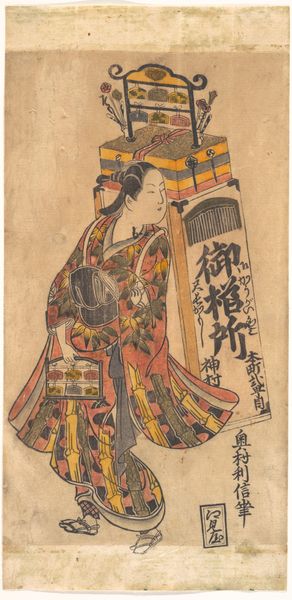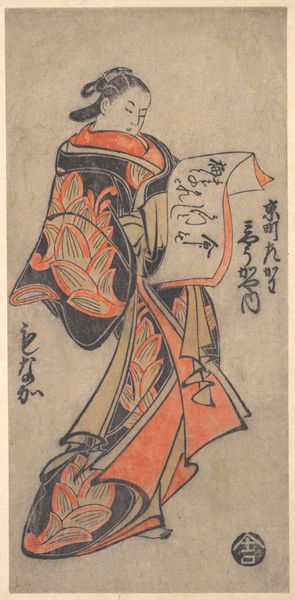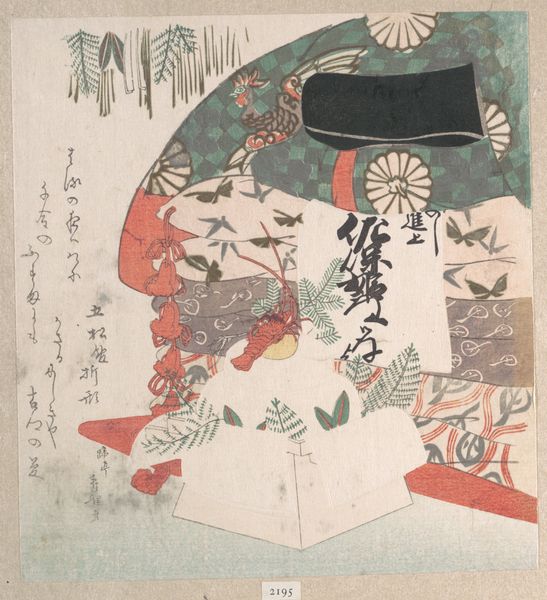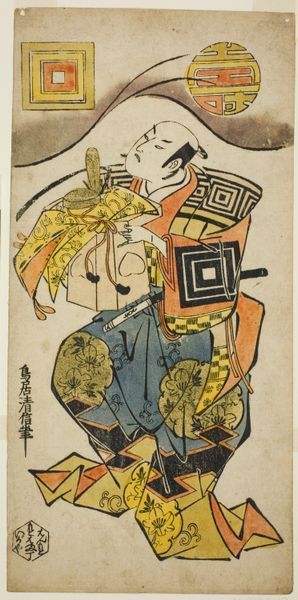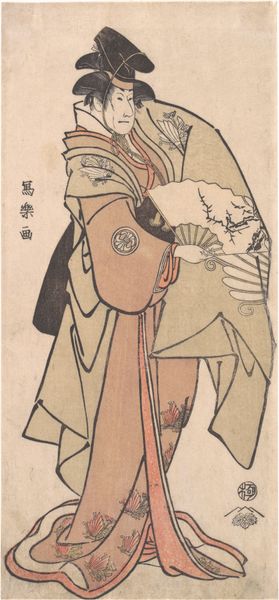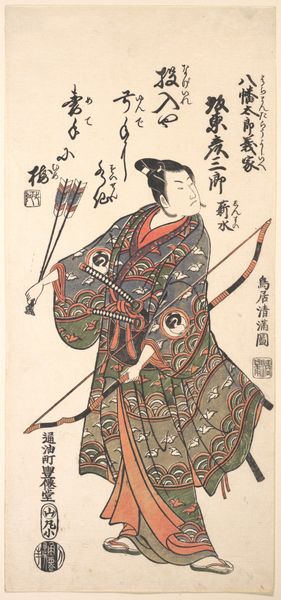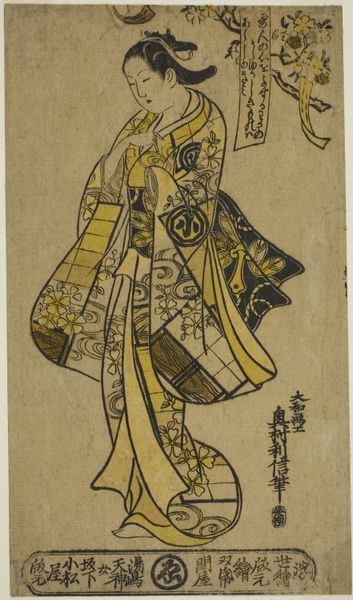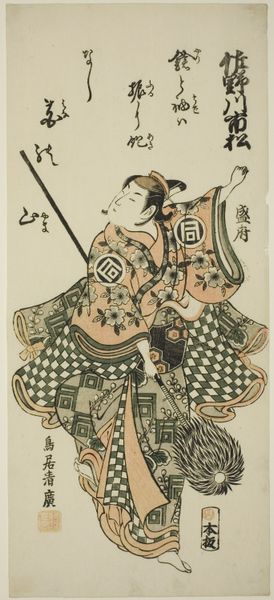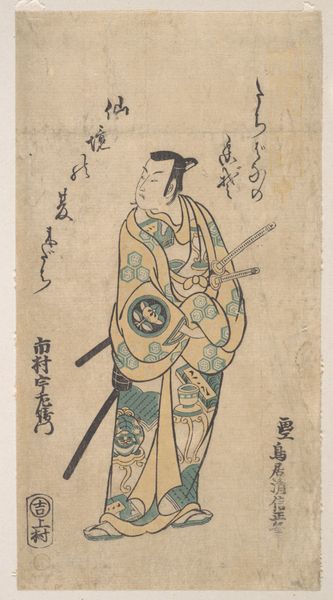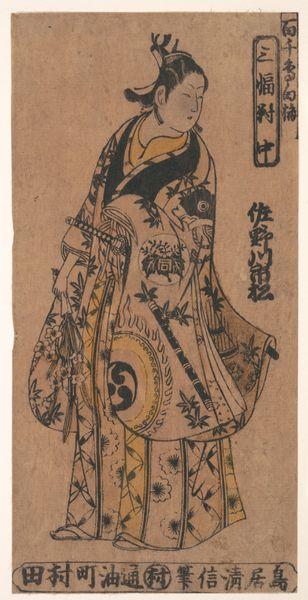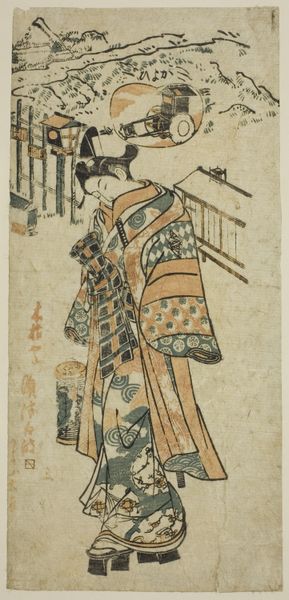
The Actor Ichikawa Danjuro V as Minamoto no Yoshiie, in the play "Date Nishiki Tsui no Yumitori," performed at the Morita Theater in the eleventh month, 1778 (?) 1778
0:00
0:00
print, woodblock-print
#
portrait
# print
#
asian-art
#
ukiyo-e
#
woodblock-print
#
genre-painting
#
cartoon carciture
Dimensions: 32.7 × 14.8 cm
Copyright: Public Domain
Curator: The work before us, housed here at The Art Institute of Chicago, is a woodblock print dating to 1778 by Torii Kiyonaga. It depicts the actor Ichikawa Danjuro V in the play "Date Nishiki Tsui no Yumitori." Editor: Whoa, he looks intense! All seriousness, barely a smile, yet playful with its stylized details. The strong diagonal lines formed by his robes create a sense of dynamic stillness—does that even make sense? It does to me! Curator: I see what you mean. Structurally, consider the contrast between the solid planes of color in his robe and the intricate patterns within. Semiotically, those repeated geometric shapes point to the controlled chaos of Kabuki itself. The layering and the texture is very pronounced. Editor: Controlled chaos… perfect. Like a really good hair day that secretly took an hour. Speaking of layers, he's got a sword and what looks like a script box perched on his head? Seems heavy. Talk about dedication to your craft! Curator: Indeed. These are symbolic elements, deeply intertwined with the specific role Ichikawa Danjuro V embodied on stage. This particular performance must have required specific accessories. Also the subdued tones of red, gray, and black, each deliberately placed, draw the viewer's attention upward to his stern expression. Editor: It’s fascinating how a few carefully carved lines and colors can convey so much character. There's a coolness about him—in spite of all that gear. I keep coming back to the seriousness of his gaze—almost like he’s peering right through us! I guess the theater-going public got exactly what they paid for? Curator: Quite right. The ukiyo-e tradition aimed to capture ephemeral moments—and to showcase popular figures like Danjuro V for the masses. Kiyonaga's technical skill is obviously striking and the subject immortalized in his print remains forever commanding. Editor: It gives you the sense you can freeze the movement of this scene, just to find the energy within the artwork. What a testament to Kabuki, but also Kiyonaga's skills to deliver something that continues to resonate after all these years. Curator: Precisely. His use of negative space gives that focus. Ultimately, this print shows us how seemingly simple aesthetic choices build significant structural narratives. Editor: To me, this feels almost voyeuristic, but what it gives, it returns by offering a real, true snapshot into 18th century Japanese theater, full of hidden details and surprising charm.
Comments
No comments
Be the first to comment and join the conversation on the ultimate creative platform.
